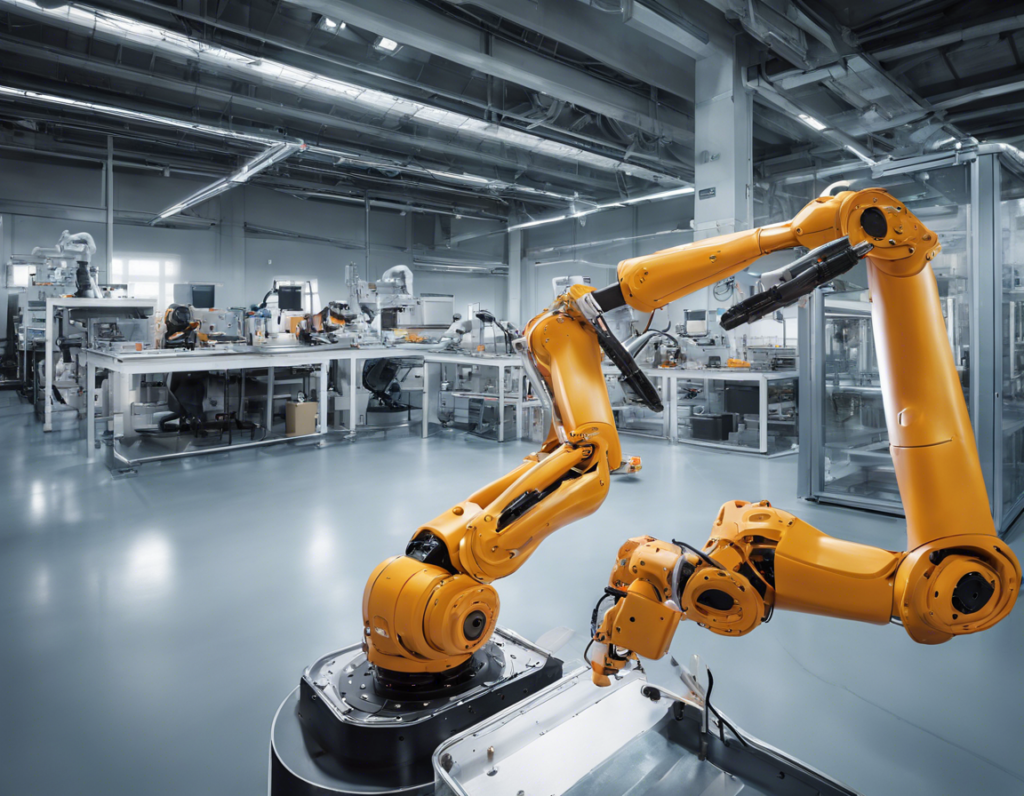Robotic arms have revolutionized the landscape of industrial automation, offering precision, efficiency, and flexibility in manufacturing processes. These sophisticated machines are integral components in modern industries, performing a wide range of tasks with speed and accuracy. The primary purpose of robotic arms in industrial automation is to streamline operations, enhance productivity, improve quality, and ensure safety. Let’s delve deeper into the main purposes of robotic arms in industrial automation.
Increased Productivity and Efficiency
Robotic arms are designed to perform repetitive tasks with consistency and speed, leading to a significant increase in productivity compared to manual labor. These machines can work around the clock without fatigue, thereby ensuring continuous production and optimizing operational efficiency. By automating mundane and strenuous tasks, robotic arms allow human workers to focus on more complex and value-added activities, further boosting overall productivity levels.
Precision and Accuracy
One of the key advantages of robotic arms is their unparalleled precision and accuracy in performing tasks. Equipped with advanced sensors and programming, these machines can execute operations with micron-level precision, eliminating the margin of error seen in human-controlled processes. The ability to consistently deliver high-quality output makes robotic arms ideal for tasks that require precise movements, such as assembly, welding, and painting in industrial settings.
Flexibility and Adaptability
Modern robotic arms are highly versatile and can be programmed to perform a variety of tasks by simply reprogramming their instructions. This flexibility enables manufacturers to quickly adapt to changing production requirements, such as varying product sizes, shapes, or configurations. By reconfiguring the robotic arms’ settings, companies can easily switch between different tasks without the need for extensive retooling or downtime, leading to increased agility and operational resilience.
Improved Workplace Safety
Safety is a top priority in industrial environments, and robotic arms play a crucial role in enhancing workplace safety for employees. By taking over hazardous or ergonomically challenging tasks, these machines help reduce the risk of accidents and injuries on the shop floor. Additionally, robotic arms can operate in environments with extreme conditions or toxic elements, keeping human workers out of harm’s way and ensuring a safer work environment overall.
Cost Savings and Return on Investment
While the initial investment in robotic arms may be substantial, the long-term cost savings and return on investment (ROI) make them a strategic asset for industrial automation. By optimizing production processes, reducing cycle times, minimizing errors, and lowering labor costs, robotic arms can deliver significant financial benefits over their operational lifespan. The improved efficiency and output quality provided by these machines contribute to overall cost reductions and enhanced competitiveness in the market.
Integration with Industry 4.0 Technologies
In the era of Industry 4.0, robotic arms form an integral part of smart manufacturing systems that leverage technologies such as artificial intelligence, Internet of Things (IoT), and data analytics. By connecting robotic arms to a networked ecosystem, manufacturers can collect real-time data, monitor performance metrics, and optimize production schedules for maximum efficiency. This connectivity enables predictive maintenance, remote monitoring, and adaptive control of robotic arms, leading to proactive decision-making and continuous improvement in operations.
FAQs:
- What are the different types of robotic arms used in industrial automation?
-
Industrial robotic arms, collaborative robotic arms (cobots), articulated robotic arms, cartesian robotic arms, SCARA robotic arms.
-
How are robotic arms programmed for specific tasks?
-
Robotic arms can be programmed using teach pendants, offline programming software, or through direct manipulation.
-
What safety measures should be considered when working with robotic arms?
-
Implementing safety barriers, utilizing sensors for collision detection, providing proper training for operators, and conducting regular risk assessments.
-
Can robotic arms work alongside human operators in manufacturing plants?
-
Yes, collaborative robotic arms (cobots) are specifically designed to work alongside human workers, ensuring a safe and efficient interaction.
-
What industries benefit the most from integrating robotic arms in their operations?
- Industries such as automotive manufacturing, electronics, aerospace, pharmaceuticals, and food processing benefit greatly from the capabilities of robotic arms.
In conclusion, the main purpose of robotic arms in industrial automation is to drive efficiency, precision, flexibility, and safety in manufacturing processes. These machines have become indispensable assets for modern industries looking to enhance productivity, quality, and competitiveness in a rapidly evolving market landscape. With ongoing technological advancements and increasing integration with smart manufacturing systems, robotic arms are poised to play a pivotal role in shaping the future of industrial automation.

